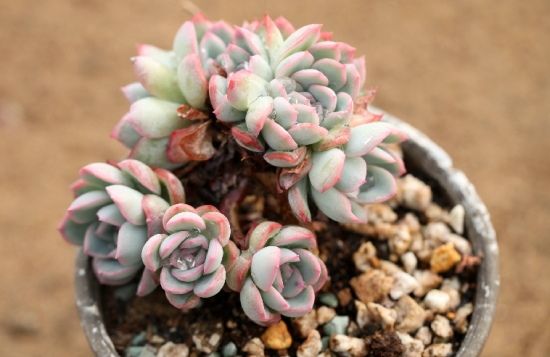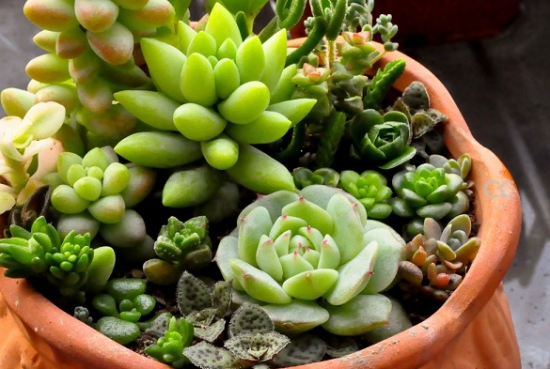Watering experience of twelve rolls of succulent plants
Succulent twelve rolls, is a more popular small succulent plant in recent years, its variety, shape, small and exquisite, elegant, very suitable for personal cultivation and ornamental. If you want to raise a lot of meat in twelve rolls, water management is a very important part. If you have a good root system, you have everything. Although the root system is not the only decisive factor, it is undoubtedly one of the most important. Next, let's learn what senior flower friends have learned about twelve rolls of watering.

How to water twelve rolls of succulent plants
With regard to the problem of twelve rolls of watering, let's say that the management of water is not only watering, which means that the way of watering may only be a few sentences, but with a little understanding of the principles and reasons, you can easily and flexibly apply it to different environments and plants:
I. Water form in plant material
The water in the plant material usually has two forms, one is capillary water form, the other is gravity water form, the two forms will be converted to each other, when the capillary water reaches excessive saturation, a large amount of gravity water will appear on the physical surface of the plant. When the gravity water dries gradually, only capillary water is left in the plant.
Capillary water is not abundant on the surface of the plant material, but is absorbed in the interior of the plant material medium by siphon. There are many plants that can capillary water, such as inorganic red jade, cinder, blue stone, vermiculite, organic fairy soil, peat, bark, anyway, plant materials with pores, all have the ability to absorb water capillaries to themselves, even when the plant material is completely saturated, it is not easy to accidentally fester the root system. On the contrary, they are best absorbed by plant root hairs.
Gravity water often exists in the open air, but in greenhouses and balconies, gravity water is sometimes dangerous. The popular point of gravity water is that when the capillary water of the plant is saturated, the water film left in the gap between the plants, or the water film on the surface of the plant, is the form of gravity water.
Gravity water during rainfall, the soil is filled with gravity water, but it is not necessarily unsafe at that time, because Rain Water from the air usually carries a lot of oxygen, and Rain Water's repeated erosion also takes away and dilutes microorganisms, and when there is oxygen in the water, even the root system can be completely soaked in the water solution without decay, and the real water management failure leads to root fester because gravity water covers the root epidermis. The original microbes in the soil quickly consume the oxygen in these gravity water, and the roots that need to do surface breathing, some of the cells drown and die, resulting in a moist and microbial-rich environment, which leads to rapid fester of the root system. this is the initial situation in which water management errors lead to root problems.
- Prev

Techniques for fertilizing succulent plants. An article will let you know how to fertilize succulent plants.
Fertilizing succulent plants has always been one of the difficult problems for flower friends, such as when to fertilize succulent plants, what fertilizers to apply, what to pay attention to, and so on. In the face of these problems, some flower friends summed up the 4W 1H 1L rule. Let's go down quickly.
- Next

Attention should be paid to water control for succulent plants during dormant period (winter and summer)
Many friends will choose to cultivate succulent plants because of the lovely appearance of succulent plants, so novices will go to experienced flower friends to learn how to cultivate succulent plants. But most of the time, they will see the word "succulent control water", they do not understand that it is
Related
- Wuhan Hospital Iron Tree Blooming Result Was Instantly Frightened by the Gardener Master
- Which variety of camellia is the most fragrant and best? Which one do you like best?
- What is the small blue coat, the breeding methods and matters needing attention of the succulent plant
- Dormancy time and maintenance management of succulent plants during dormancy
- Minas succulent how to raise, Minas succulent plant pictures
- What are the varieties of winter succulent plants
- How to raise succulent plants in twelve rolls? let's take a look at some experience of breeding twelve rolls.
- Attention should be paid to water control for succulent plants during dormant period (winter and summer)
- Watering experience of twelve rolls of succulent plants
- Techniques for fertilizing succulent plants. An article will let you know how to fertilize succulent plants.

